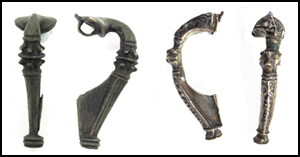Published online by Cambridge University Press: 21 November 2016

Since the establishment of the Portable Antiquities Scheme, the systematic reporting of metal-detected finds in England and Wales has increased our knowledge of distribution patterns and complemented the evidence from assemblages uncovered by conventional excavation. The large number of Roman metal small finds documented, particularly brooches, now allows for a quantitative comparison between those recovered through excavation and those discovered by metal-detecting. This study shows that certain artefact morphologies are more easily detected than others, resulting in differential rates of representation in the archaeological record. It is suggested that similar biases can be seen in artefacts from other periods. This has important consequences for anyone wishing to use metal-detected material in synthetic studies.